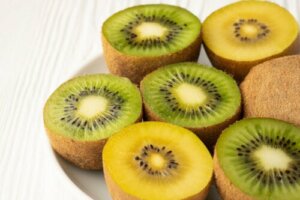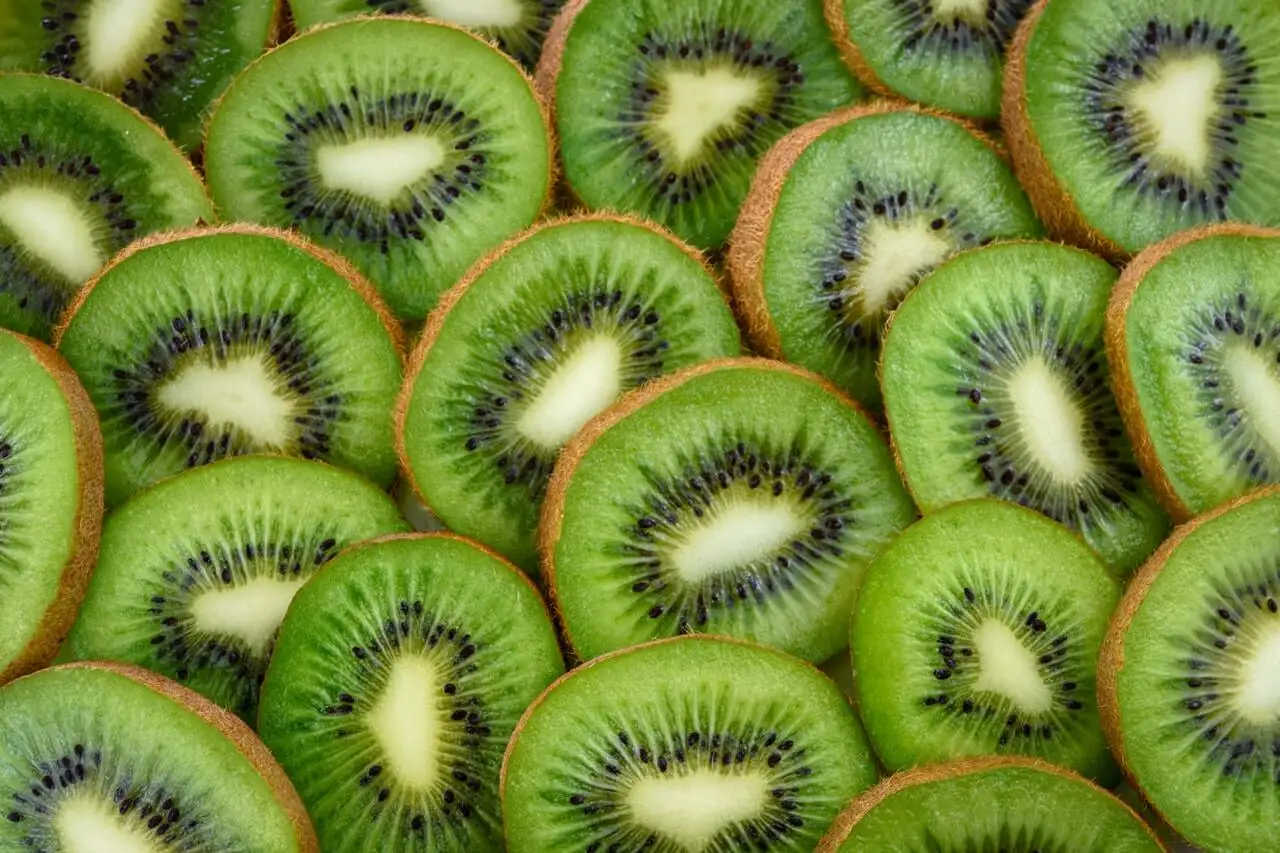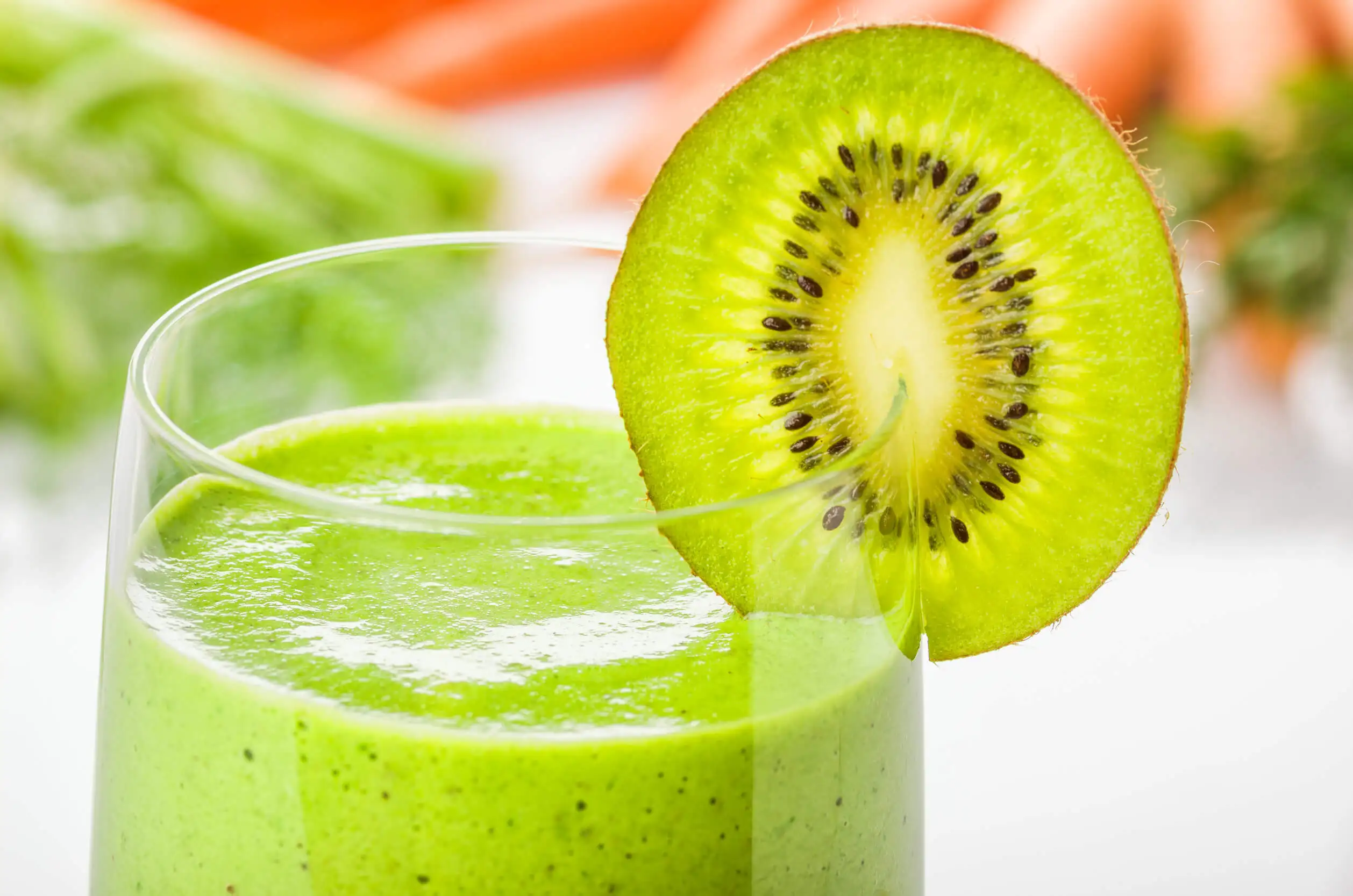The Differences Between the Green and Yellow Kiwifruit


Written and verified by the nutritionist Anna Vilarrasa
We recently published an article on the red banana, and today it’s the turn of the yellow kiwifruit! Broadly speaking, the green and yellow (also called the golden) versions are similar varieties of the same fruit, but there are some differences between them. Although these are, perhaps, subtle differences, they may help you to choose between one and the other on your next visit to the greengrocer’s or supermarket.
In a short time, the kiwi has gone from being an almost unknown and wild fruit to being massively exploited and becoming a crop of international commercial importance.
It’s certainly a tasty and nutritious fruit. Consuming just one medium-sized kiwi fruit, you can ingest 85% of the recommended daily amount of vitamin C. It’s also a great help for people with intestinal problems.
Origin and characteristics of the kiwi
The kiwi fruit originates from China, where it grows in the temperate forests and hills of the southwest. Curiously, it’s actually the berry of a vine. There it was known by the names yangtao (strawberry peach) and mihoutao (monkey peach).
In the early 1900s, it was introduced to New Zealand, and since then, it has been cultivated in other warm climate areas. It’s in this country that it acquired the name of kiwi, thanks to the bird of the same name, which is a national symbol of the islands.
The green kiwi fruit (Actinidia deliciosa ) is the most cultivated worldwide. Of all its varieties, the Hayward type is the one that stands out above the rest. Yellow kiwi fruit belongs to the Actinidia chinensis species, which is the second most important crop.
Read more here: 8 Benefits Of Kiwis That You Should Know About
The most notable differences between green and yellow kiwifruit
At first glance, the biggest difference between the two fruits is their physical appearance. Once peeled or sliced, the yellow kiwi fruit stands out with a striking, almost smooth golden color. The green kiwi fruit, on the other hand, has an intense greenish hue and is speckled with black seeds.
Externally, the green kiwifruit has a rougher, hairier, harder, and darker skin than the yellow kiwifruit. The yellow kiwifruit, on the other hand, is covered with a thinner, lighter-colored skin. All parts of the fruit are edible, although the rough, hard skin is usually discarded.
When tasted, the yellow kiwifruit is sweeter and softer than the green variety. For this reason, the former is perfect for adding to, and decorating, sweet dishes and desserts, such as cakes, ice cream, and pastries. It’s also ideal for eating on its own as a snack.
Similarly, the green kiwi can be eaten on its own and is a favorite for those who are attracted to a slightly sour taste. It’s a popular ingredient in smoothies and to serve in a multitude of savoury dishes.

Nutritional differences between green and yellow kiwifruit
Kiwifruits have a high concentration of nutrients. These include vitamin C, dietary fiber, and folates.
But they also contain other very important bioactive components, such as enzymes, antioxidants, and various phytochemicals. This is the nutritional composition of 100 grams (4 oz) of edible portion:
- Water: 83.90 grams (just over 3 oz)
- Energy: 58 kilocalories
- Protein: 1.06 grams
- Lipids: 0.44 grams
- Carbohydrates: 44 grams (nearly 2 oz)
- Fiber: 3 grams
- Potassium: 198 milligrams
- Vitamin C: 92.7 milligrams
- Vitamin E: 1.36 milligrams
- Vitamin B9 (folate): 26 micrograms
- Beta-carotene: 52 micrograms
- Lutein + zeaxanthin: 122 micrograms
It appears that both green and yellow kiwifruit are quite similar in composition. The main difference lies in the vitamin C levels, which are much higher in the golden (yellow) one.
Ascorbic acid (or vitamin C) is an important micronutrient for our body’s daily functioning. It has an antioxidant property that allows it to fight the harmful action of free radicals. It’s necessary for collagen production and improves iron absorption.
Its role in health has also been known about for a long time. A Cochrane review highlights its role in improving the functioning of the immune system and in reducing the symptoms of the common cold.
Apart from these properties, the kiwi is a fruit that helps the digestive process, both for its dietary fiber and for the presence of some enzymes that help to break down proteins. It’s also perfect for promoting intestinal transit.

Discover more here: 8 Symptoms of a Vitamin C Deficiency
Green and yellow kiwifruit are perfect for a healthy diet
Eating plenty of fruit and vegetables is a beneficial habit and one of the foundations of a healthy diet. Kiwifruit, both the yellow and green versions, have an interesting amount of vitamins, fiber, and antioxidants that are good for your health.
Choosing one or the other is almost a decision of personal preference, as the most significant differences are in taste and texture. Having said that though, at certain times and in certain areas, it can be more difficult to find the yellow version, which is also more expensive.
Both keep very well at home, out of the fridge, and sheltered from the sun and heat. However, it’s best to ensure they aren’t overripe.
Once they’ve reached their ideal ripeness, the only thing left to decide is whether you want to eat them on their own or with other fruits, in a smoothie, or in a salad. It doesn’t matter when you eat them, because kiwis offer all their properties, whatever time of the day you eat them.
All cited sources were thoroughly reviewed by our team to ensure their quality, reliability, currency, and validity. The bibliography of this article was considered reliable and of academic or scientific accuracy.
- Food Data Central. Kiwi fruit, raw. U.S. Department of Agriculture. Octubre 2020.
- Hemilä H, Chalker E. Vitamin C for preventing and treating the common cold. The Cochrane Database of Systematic Review. Enero 2013. 31 (1): CD000980.
- Kaur L, Boland M. Influence of kiwifruit on protein digestion. Advances in Food and Nutrition Research. 2013. 68: 149-67.
- National Institutes of Health. Office of Dietary Supplements. Vitamina C. Diciembre 2019. U.S. Department of Health and Human Services.
- Richardson D. P, Ansell J, Drummond L. N. The nutritional and health attributes of kiwifruit: a review. European Journal of Nutrition. Febrero 2018. 57 (8): 2659-2676.
- Sivakumaran S, Huffman L, et al. The nutritional composition of Zespri SunGold Kiwifruit and Zespri Sweet Green Kiwifruit. Food Chemistry. Enero 2018. 1; 238: 195-202.
- Valero Gaspar T, Rodríguez Alonso P, et al. La alimentación española. Características nutricionales de los principales alimentos de nuestra dieta. Fundación Española de la Nutrición y Ministerio de Agricultura, Pesca y Alimentación. 2018.
This text is provided for informational purposes only and does not replace consultation with a professional. If in doubt, consult your specialist.








